Information overload
We are living in the Information Age. The volume of content we receive and have access to – books, newspapers, blogs, social media, podcasts, and tweets, as well as interacting with the “real” world – is both amazing and overwhelming.
In this article I will walk you through:
- An overview of my process to deal with all the info
- Techniques to ensure you focus on the best information
- Tools to capture the highlights
- Methods to turn this content into insight
I would love to hear about anything I’m missing in the comments.
Processing Information
The image below is a visualisation of how I attempt to capture the information that matters, to enhance my productivity, and thought process, and (hopefully) turn this into creative output. While I use a number of tools, the ones highlighted in blue, i.e. Readwise and Notion, are mission-critical. More on them below.
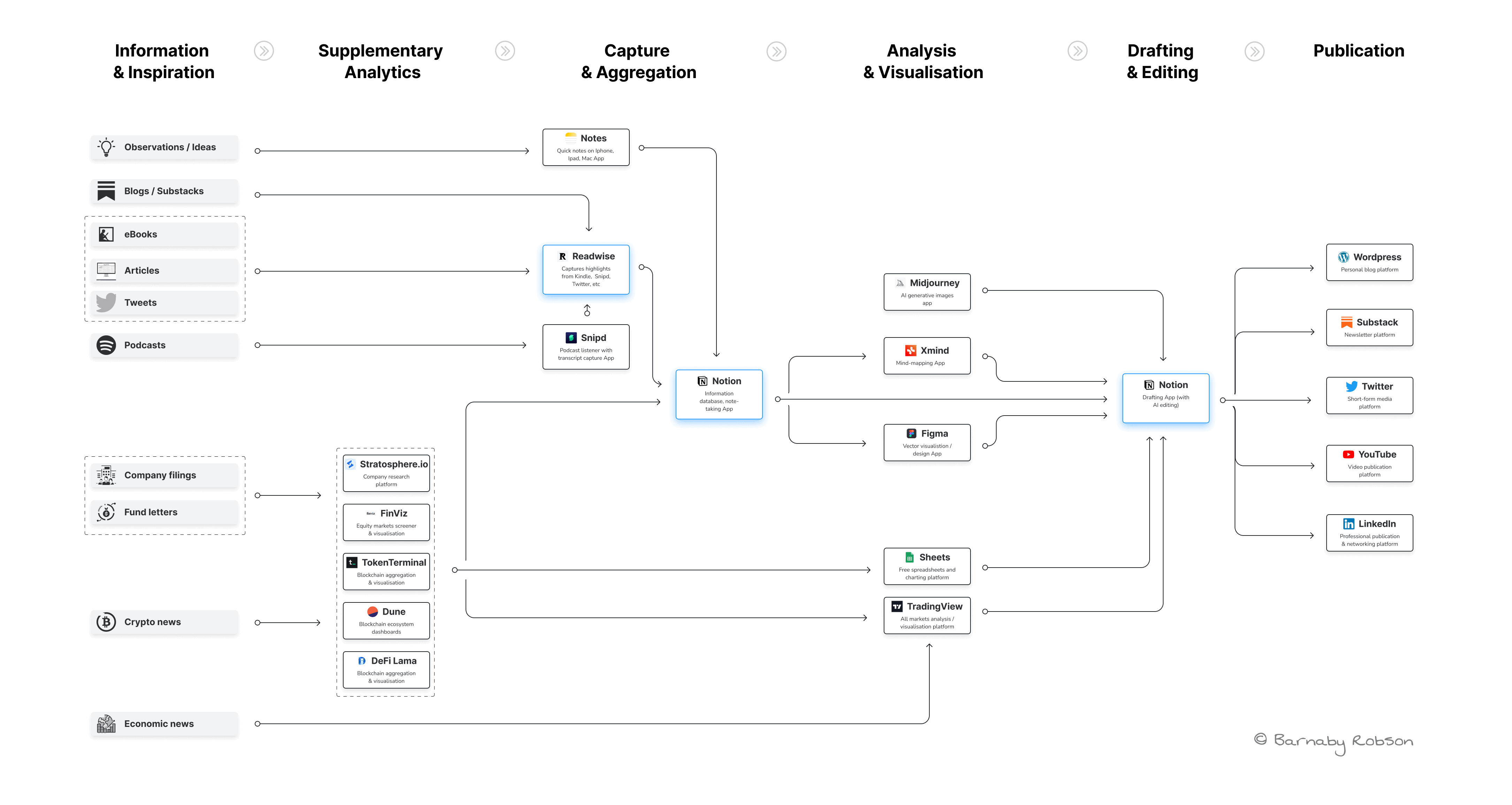
How to Retrieve the Best Information
These are some of the strategies and tools I use to manage the front end of the information funnel to help me focus on what matters.
1. Take Advantage of Gmail Automations
Gmail offers a plethora of features to help manage incoming email, substacks, notifications, news subscriptions, etc. I have set up Gmail filters to:
- Automatically categorize/label all messages by nature
- Automatically archive and label messages I (may) want to read later
- Flag VIP messages
- Auto-archive/delete irrelevant notifications
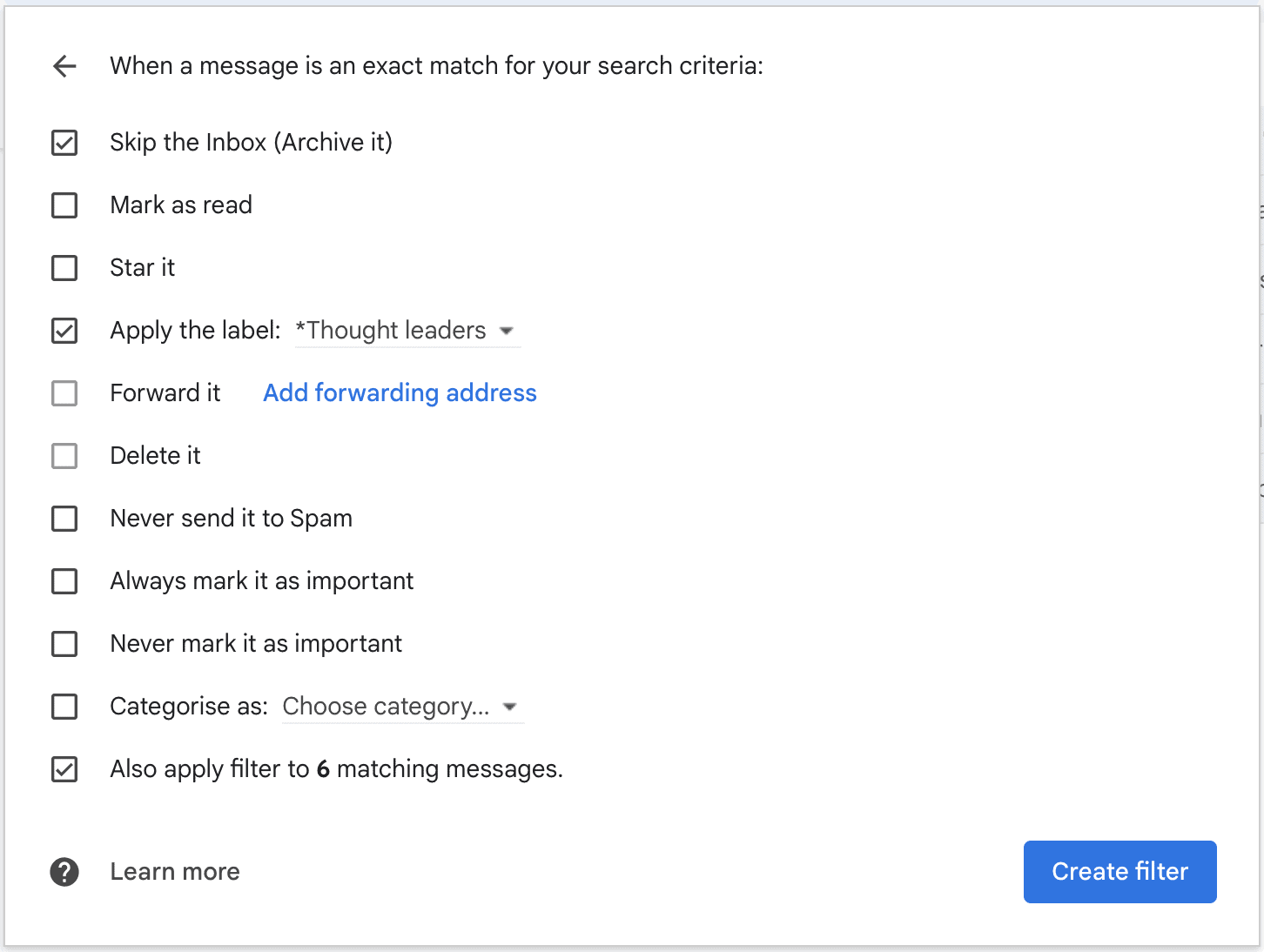
2. Use Twitter’s “Lists” Feature
Twitter has a ton of excellent content, direct from some of the smartest and most influential people in the world.
Twitter lists help you filter the people you follow so you can focus on what matters at that point in time. This greatly improves the experience. Below are examples of the ones I’ve set up.
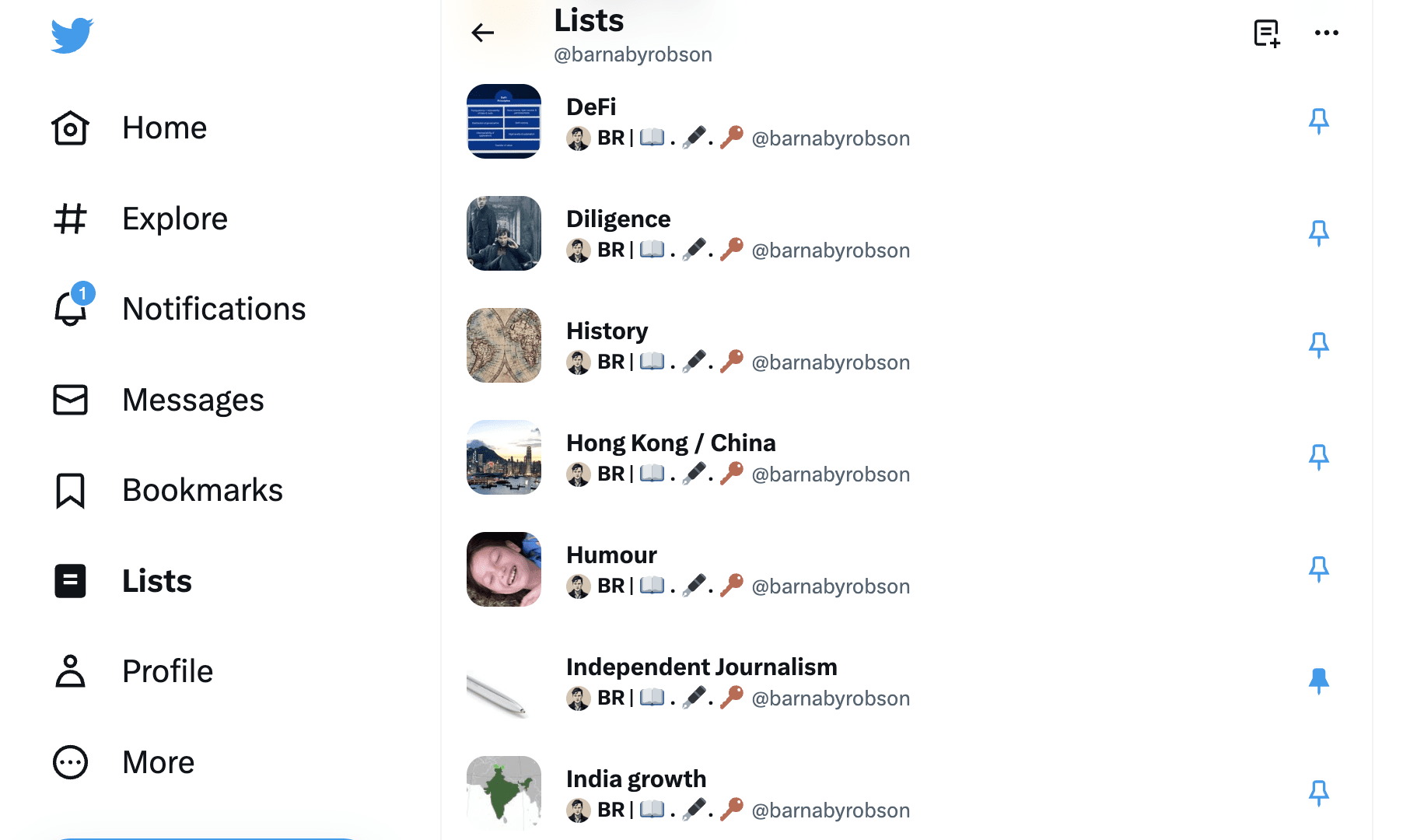
How to Capture the Most Valuable Information and Ideas
There are four key tools I use for this:
1. Notes (Free) – The Best Note-Taking App
I use Notes to capture all my random thoughts and ideas, so I don’t forget them. These often come when I’m walking, and I like that Notes is quick to access and easy to use.
The beauty of this app is also that it is cross-platform, so it consolidates all notes across my iPhone, iPad, and Mac. It’s also incredibly powerful and rarely used to its full potential, as this fantastic thread explains.
2. Readwise (Paid) – To Capture Everything You Read
Readwise is an aggregation platform that captures highlights from eBooks (Kindle), Instapaper (Any online article), Twitter (can capture entire threads), and transcripts from podcasts (via Snipd). This has given me massive improvements in what I’m able to recall.
Readwise not only captures this information but also categorizes it and pushes it into my Notion Database. This is what it looks like in Notion:
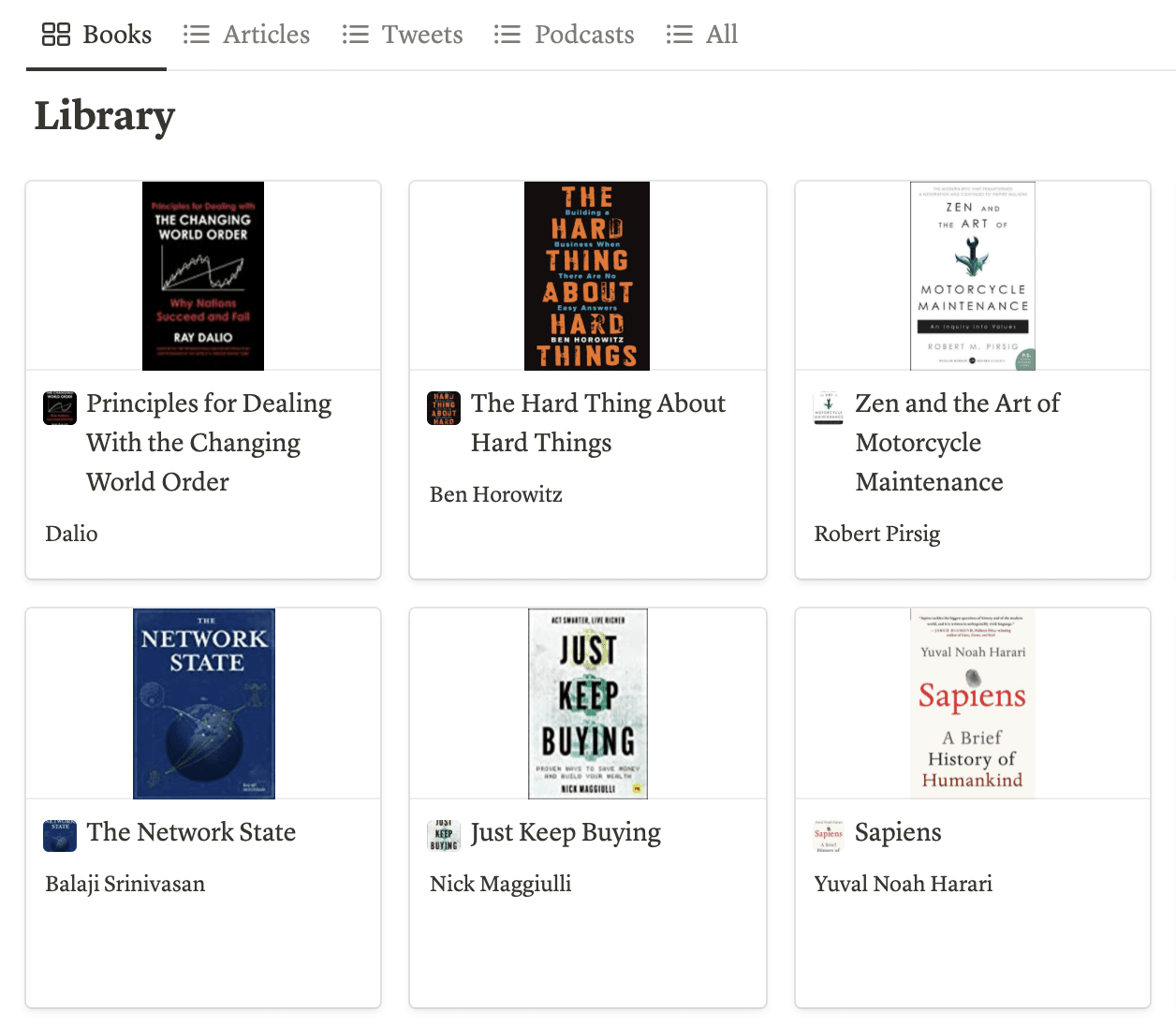
3. Snipd (Free) – To Capture Everything You Listen To
Podcasts give you access to some of the smartest people across all walks of life. Before I discovered Snipd, I often found myself having to pause to take notes (or often not taking notes at all and forgetting).
Snipd is a podcast listener that integrates AI to (a) break up a podcast into different topics, (b) create transcripts, and (c) capture and push segments to Readwise (whenever you hear something interesting, you can click “create snip,” and it will capture the key points made). It’s really helped me unlock knowledge from podcasts.
4. Notion (Paid) – To Pull It All Together in One Database
You can send any article directly to your Notion database for further reading. As noted above, it also integrates with Readwise to capture information from books, podcasts, and tweets.
It’s become my central database for all knowledge and information and helps me stay organized.
Going from Ideas/Highlights to Output and Insight
Once I have an idea for something I want to research, analyze, or write on, the tools and steps are usually as follows:
1. Xmind (Paid) – To Mind Map/Link Ideas and Information
Mind-mapping helps me declutter thoughts and improve concentration.
I tried every major mapping software, and Xmind is by far the best. It’s visually great and very flexible. Quick to use and cross-platform. Can capture data from images, to audio notes, to website links, and much more.
2. Figma (Free) – To Visualize Ideas
Often I might have a conceptual idea, which can’t be visualized via data/charts/tables. For this, I use Figma.
The process flow at the start of this article was created in Figma. You could probably do something similar with PowerPoint, but what makes Figma stand out is its vector graphics. There are also a ton of tools/graphics that are free to use, created by the Figma community.
3. Notion (Paid) – To Draft Written Output
Notion’s clean interface and unique block-style pages make it the best software for drafting articles. Some of the features I really appreciate are:
- Toggles – which make it really easy to hide content so you can focus on what’s important
- The ability to link and synchronize pages and paragraphs across notion databases
- The flexibility to pull in almost any content – images, embed links, videos, data tables, etc. onto one page
- Drag and drop to arrange and move content around
In addition, Notion has introduced AI editing – which helps quickly pull summaries or action points from notes and articles, improve writing (one-click editor), fix spelling and grammar, and much more.
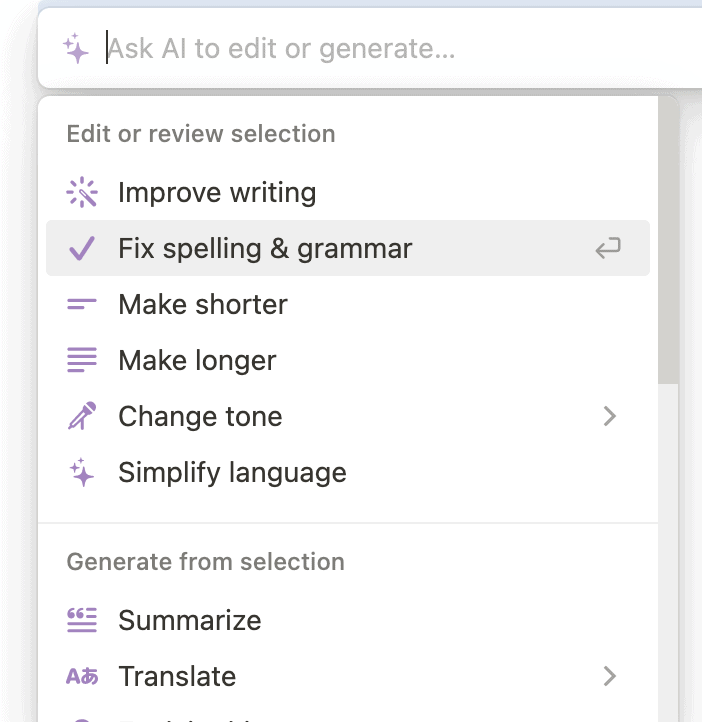
4. MidJourney (Free) – To Create Cover Images for Articles
I’ve tried a number of AI generative art apps – Dall E (from Chat GPT), Lensa AI – but MidJourney is the best so far.
The cover for this article was generated by MidJourney (the request was: “A blogger sitting at a desk staring at a blank screen, surrounded by crumpled paper and empty coffee cups, in a dimly lit room. The mood is one of frustration and writer’s block. The atmosphere is stifling and tense, as if the air in the room is heavy and difficult to breathe. Photography using a wide-angle lens, capturing the entire desk and surrounding clutter. The camera settings are ISO 400, f/2.8.”).
MidJourney is available via Discord.
Closing thoughts
The tools and processes outlined above have really helped me. Hopefully this helps others deal with info overload too.
In the process of documenting this, a number of other thoughts and questions have been triggered:
- We have reached a period where individuals (and the more agile small businesses) have access to more powerful tools than employees at large corporations. This is because large businesses have complex IT policies and processes, which means they don’t allow access to tools such as Notion, for information security, or other policy reasons. Large businesses are going to have to find ways to adopt the new, much better software, faster.
- Many of the tools that have really elevated my productivity embed some form of AI – Snipd, Notion, MidJourney, etc. There is a case to say AI is overhyped (and certainly ChatGPT seems to be for search), but it’s becoming clear to me we are about to see profound impacts on the future of work:
- Companies that adopt AI faster will be way more productive and quickly outcompete.
- It’s white-collar jobs, not blue-collar, that seem most at risk.
- Creative workers are at the eye of the storm – copywriting, design/graphics/art, etc. roles in particular. I didn’t expect this and thought the opposite would be true.
- This in turn leads me to think about my daughter, and what path I should try and steer her towards. What skills will be most valued in the future?
- Notion is an incredibly powerful tool and when it IPOs will be one of the most valuable public companies in the world. To defend their positioning / grow their moat, the Notion team should probably acquire Readwise.
- Why are Chinese companies nowhere to be seen in terms of new exciting AI software/tools? I read ‘AI Superpowers’ some years ago which implied China should have a massive data advantage that would feed Machine Learning prowess.

